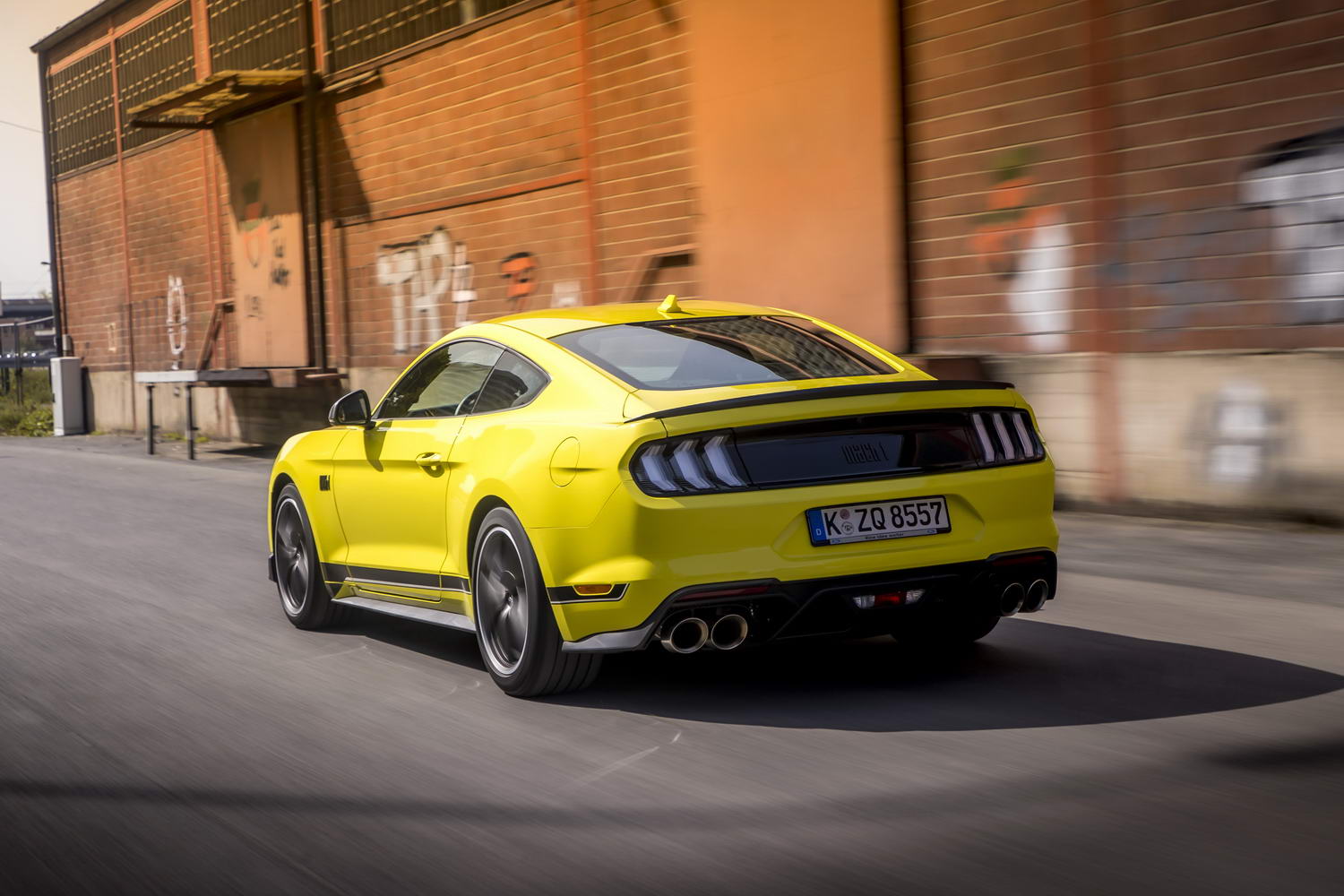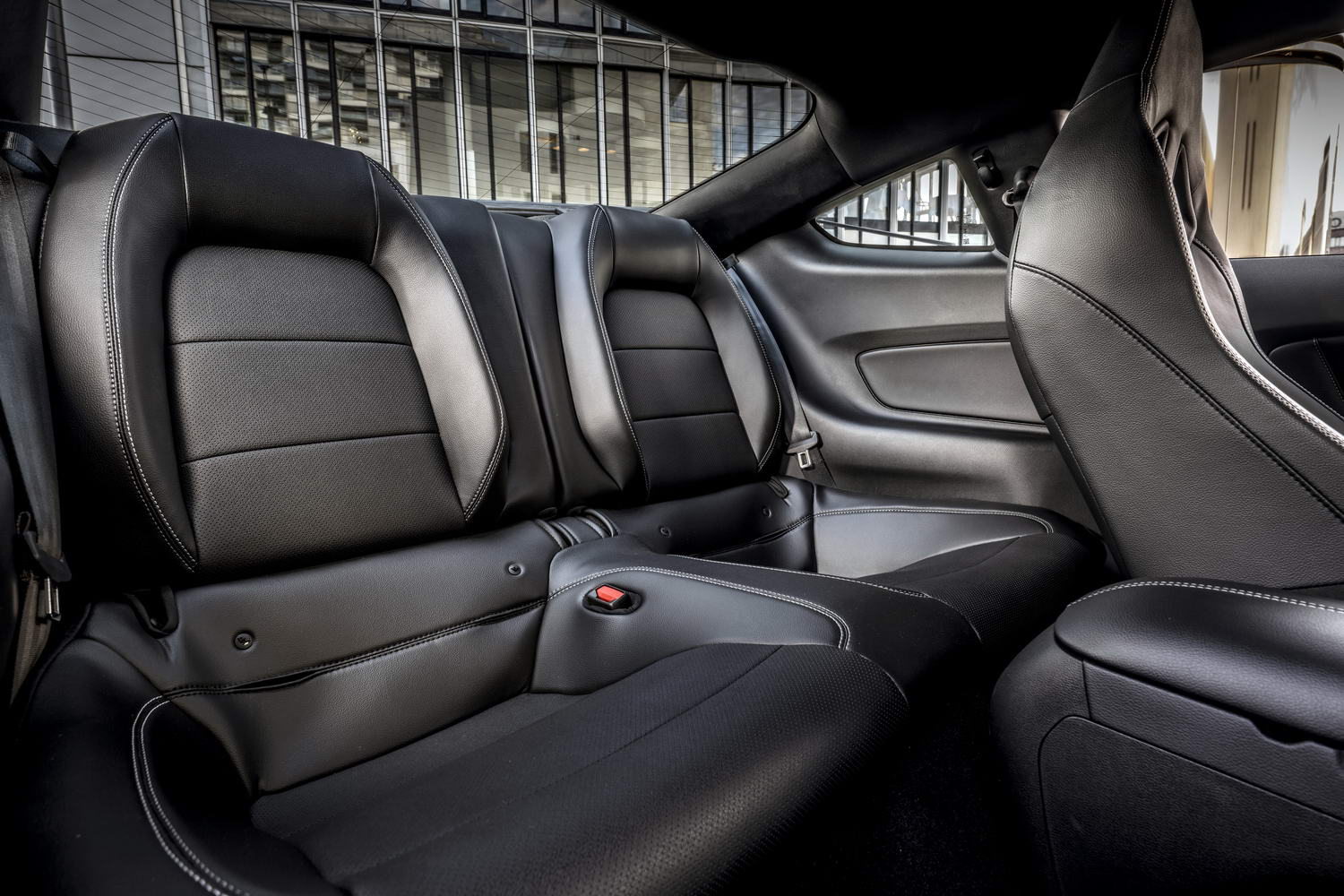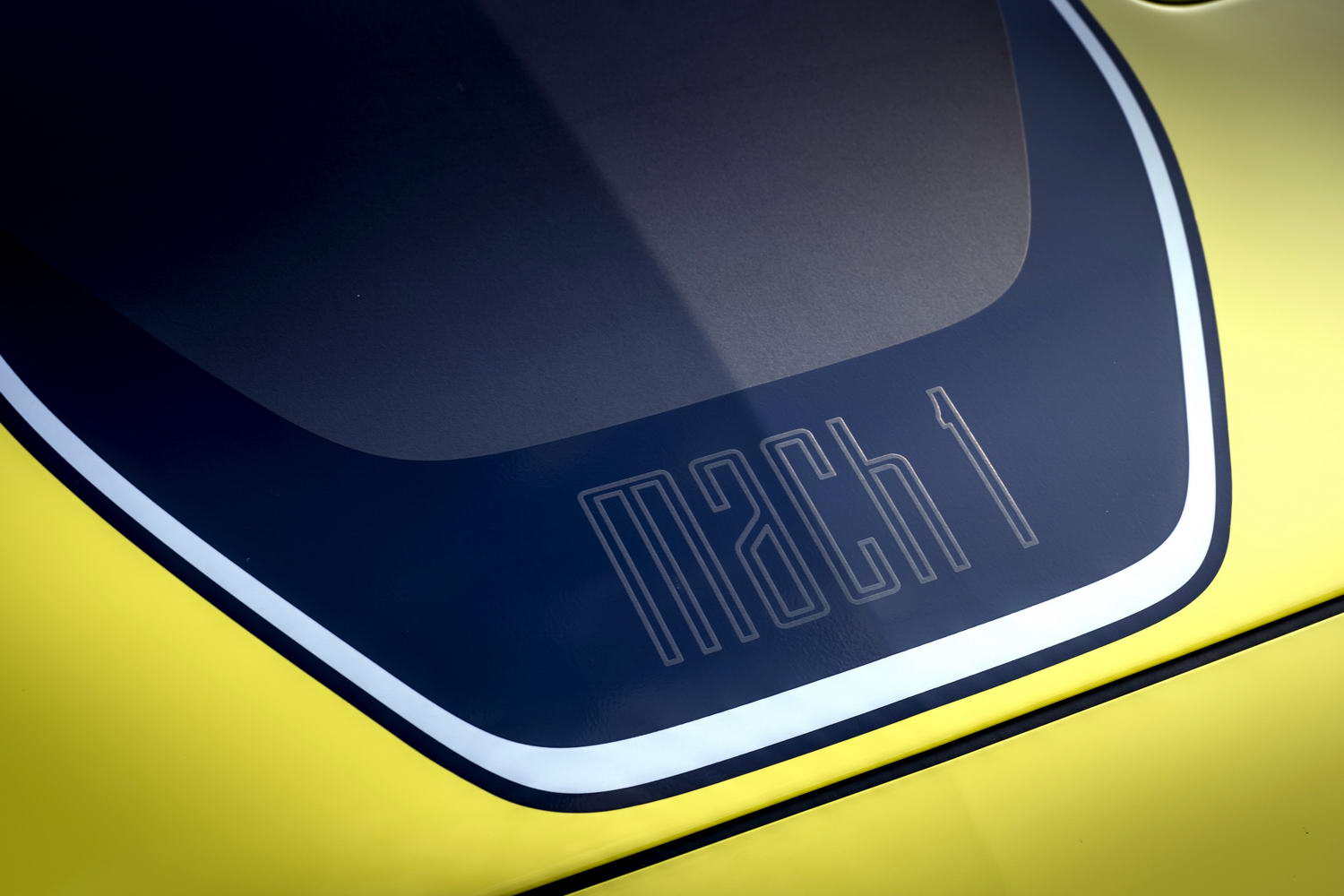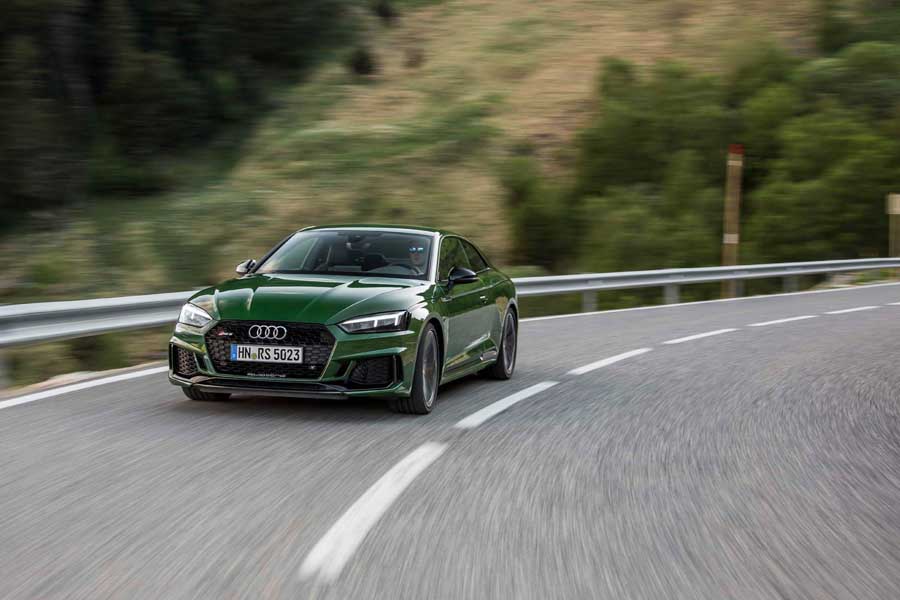It's a Mustang Fastback, Jim, but not as we know it. Well, not quite. The Mach 1 is a nameplate that stretches back to 1969, when the Mustang was but four years old as a model. It has come to be synonymous with the concept that it is a slightly faster, slightly more focused variant that manages to remain relatively affordable to the masses - leaving the dearer Shelby-tuned GT350 and GT500 models to do the full mental Mustang thing.
The Mach 1 also has a modern-day legacy, because it is from this derivative of the 'real' Mustang that Ford adapted the name for the fully electric Mach-E.
So, with more than 300,000 Mach 1s sold across 52 years and various generations (it has always been a limited-run model, not a widely available version of the Ford icon), the company believes the moment is right to bring it back for the 2020s. And what's special about this new one is that it's the first time we've ever officially had the Mach 1 in Europe. Is the new Mach 1 the Pony Car to put in your stable?
In the metal
It is reasonably easy to spot the new Mustang Mach 1. It is only available as a 'Fastback' coupe, so no dreams of doing a track-day in the Convertible Mach 1, people.
Anyway, the Mach 1 can generate up to 22 per cent more downforce than a Mustang GT, and so the front end is sleeker with a different arrangement of grille, bumper and lower air intakes. The Mach 1 also has a large splitter as part of its aero pack.
The most unusual feature are those two blanked-off circles in the main radiator grille - they're not there in error, but rather they're pop-out panels if an owner fancies fitting some aftermarket lamps to make the 2021 Mach 1 look more like the 1969 version.
Obviously, you might have noticed the Mach 1 has its own, bespoke body colours and stripe graphics, further denoting its status as the top-dog of European Mustangs, while the 19-inch five-spoke alloys are reminiscent of, yes, the wheels fitted to the original version from the sixties.
On the front wings are 'Mach 1' emblems, a feature repeated on the black panel between the idiosyncratic taillights at the back of the car - where it replaces either the galloping pony (four-cylinder) or GT (5.0 V8) logos of the regular line-up.
You might also spot a small lip spoiler on the boot, which contributes to the increased downforce, as well as the rear diffuser borrowed from the US-only Shelby Mustang GT500 and a set of quad tailpipes that are larger (4.5 inches for each exit) than those on the normal 5.0-litre model. Overall, the Mach 1 looks fabulous on the outside; purposeful, without being needlessly overblown.
Inside, Ford's gone the other way by hardly changing the 5.0-litre GT's cabin whatsoever. There's an anodised metal look to the instrument cluster and a few 'Mach 1' logos here and there, as well as a bespoke passenger-fascia plaque denoting the model and its individual number in the limited-build run.
But it is otherwise as per the regular Fastback, which is no bad thing to these eyes although there are those who think the Mustang's interior is a little bit cut-price compared to the cabins found in the elite German opposition. Anyway, aside from that consideration, it's all good.
Driving it
The new Mustang Mach 1 uses the 'Coyote' 5.0-litre V8 from the regular GT, only fitted with an 'Open Air Induction System', intake manifold and 87mm throttle bodies from the Shelby Mustang GT350 model (again, this being a car that's only available to Ford North America customers).
Recalibrated engine management software and special fuel injection (that combines both port and direct injection for low- and high-pressure work respectively) liberates an extra 30hp from the V8, for a peak of 480hp.
Except... here in Europe, we don't get the 480hp Mach 1. We get a 460hp/529Nm state of tune instead; hardly shameful numbers, and in fact they're shared with the special Mustang Bullitt that is no longer on sale, but it's a pity we can't have the full-fat model. Still, it's a bit faster than the regular Mustang 5.0, running 0-100km/h in 4.6 seconds, around three-tenths quicker, and going on to a 267km/h top speed.
But to suggest the Mach 1 is just an incredibly modest power upgrade for the big American bruiser is doing this particular Mustang a grotesque disservice. Aside from the big wheels, on grippy Michelin Pilot Sport 4S tyres, and the improved aero we've already mentioned - including an extended undertray to give better airflow beneath the car - there are significant drivetrain and chassis updates to bolster the Mach 1 package further.
For instance, you can have the car as a six-speed manual or a ten-speed automatic, details which look no different on paper. However, the three-pedal model has a Tremec transmission with a twin-plate clutch and a rev-matching function, whereas your common-or-garden 5.0-litre uses a Getrag gearbox without this auto-blip facility and, while the ten-speed auto is broadly the same physical unit as used in any other Mustang self-shifter, it nevertheless has a tougher torque converter and its own special mapping for the control software in the Mach 1.
Whether you want to shift gears yourself or leave it to the computer, either Mach 1 model has an uprated gearbox oil-cooler for added durability on track. Oh, and you can 'flat' upshift in the Tremec transmission as well. Nifty.
There are other improvements to the cooling for the brakes, which have more air channelled to them via the aerodynamic kit on the Mustang, while the 5.0-litre engine has an auxiliary oil cooler and a special filter adaptor to ensure consistent fluid flow during high lateral loads.
We've already said the Active Valve Performance Exhaust has the larger tips to enhance the sound, while the MagneRide dampers are given their own state of tune and are teamed with bespoke springs, anti-roll bars and bush specifications.
Coupled to the subframe and toe-links shared with the Shelby models and retuned electric power-assisted steering too, Ford claims this has the most direct and communicative steering of any Mustang seen in Europe so far. The Mach 1 also has a brake booster with a faster response time, so it should stop as well as it goes.
We ought to point out at this stage that the Mustang Mach 1 manual still weighs 1,755kg, so its track-readiness (or otherwise) must be couched in terms of it being a large front-engined, rear-driver, rather than some sort of Caterham substitute. Furthermore, we only drove it on track, the Goodwood Motor Circuit, a high-speed, high-commitment loop around an old airfield. So, we can't talk, as yet, about what the Mach 1 is like on a day-to-day, road-going basis.
What we can say is this is clearly operating at a higher level than any other Mustang we've encountered yet. You can feel it immediately in the relative responsiveness of the front end of the car, which is much keener to get turned in and which filters so much more feedback to its driver through the steering wheel.
Combined with that beautifully positive if heavy-duty Tremec gearbox, it makes the whole process of getting the Mustang to go fast much more involving - and invigorating too.
That allows you to focus on a V8 drivetrain that loves to rev, and which bestows really impressive pace on the Mustang Fastback, while also making a terrific din.
It's not the loudest Mustang we've ever heard (more on that in a future review...), but it certainly has more of spikier, angrier edge to its voice than the standard Coyote 5.0-litre. Which is already one of the finest automotive tunes on sale right now.
Anyway, sure, we could say the Mustang still feels a touch heavy in the corners and it wants to oversteer before it does anything else, but the limited-slip differential gives it loads of traction to ensure it feels playfully tail-happy, rather than unruly and wayward. Yep, as a track-focused model goes, the Mustang Mach 1 feels like it is right on the money.
What you get for your money
While the Mustang Mach 1 is hardly cheap at more than €82,000, you could argue that it is tasked with taking on the rivals we mention below - all of which are six-figure machines these days. That said, the Mustang isn't quite as powerful as the most potent European alternatives, although it is well specified for its outlay.
It's more the fact that it requires €12,356 to go from a 'regular' GT 5.0 V8 Fastback to this car that raises questions, although at least the demise of the 2.3-litre EcoBoost four-cylinder model isn't skewing perspective further; you used to be able to get in one of those for €44,341 just before they went off sale, so you can see just how highly Ford itself rates the Mach 1 with its robust price tag.
Summary
How much you're going to appreciate the Ford Mustang Mach 1 depends upon how much you love the standard car upon which it's based in the first place, and also how often you go on a circuit with your daily set of wheels. Naturally, there are smaller, lighter, cheaper cars that would make better out-and-out track-day machines than the Mach 1, but if it proves to be half as engaging to drive on the public road as it was around Goodwood, this 460hp Mustang is definitely going to be the undisputed pick of the range. And maybe, just maybe, the most fun large premium coupe going right now, as well.



































